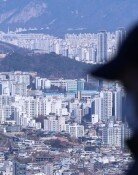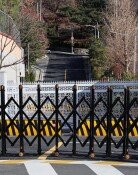Ruling, main opposition parties expect tight races in more constituencies
Ruling, main opposition parties expect tight races in more constituencies
Posted April. 08, 2024 07:55,
Updated April. 08, 2024 07:55

With the turnout in early voting for the April 10 general elections hitting a record high (31.28 percent), the ruling and opposition parties are expecting to see an increase in the number of swing districts across the country due to rallies by their respective supporters. The ruling People Power Party estimates that it could win 80 to 100 seats in the 254 districts at stake nationwide, while the Democratic Party of Korea forecasts it could win 130 to 150 seats.
According to data compiled by The Dong-A Ilbo through interviews with key officials from the parties' provincial and central election campaign committees on Sunday, the People’s Power Party sees 76 districts with a clear lead and 24 with a slight competitive advantage. If the number of seats gained in swing districts in line with the recent trend is added, the party is looking at 80 to 100 seats. While the Democratic Party officially maintains that it has about 110 districts in which it leads, internally, the party believes that it can garner at least 130 seats or as many as above 150 seats, including districts where it is leading slightly amid a tight race. The party thus estimates it can secure a majority of the National Assembly seats even with the constituency seats at stake alone.
Both parties believe that early voting has tightened the race in more nationwide districts as their respective supporters rally around them in those constituencies. For the People's Power party, toss-up districts grew from 55 to more than 60, as districts where races had been close before early voting became toss-ups.
The Democratic Party also calculated that swing districts, which were estimated to be 48 before early voting, have increased to at least 54. "In Seoul, we believe that Seocho-Eul, a traditionally conservative district, has gone from a constituency where we were trailing to a toss-up district," said a key Democratic Party official.
Sung-Hwi Kang yolo@donga.com
Headline News
- Joint investigation headquarters asks Yoon to appear at the investigation office
- KDIC colonel: Cable ties and hoods to control NEC staff were prepared
- Results of real estate development diverged by accessibility to Gangnam
- New budget proposal reflecting Trump’s demand rejected
- Son Heung-min scores winning corner kick







